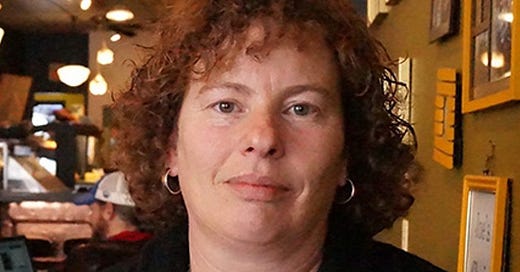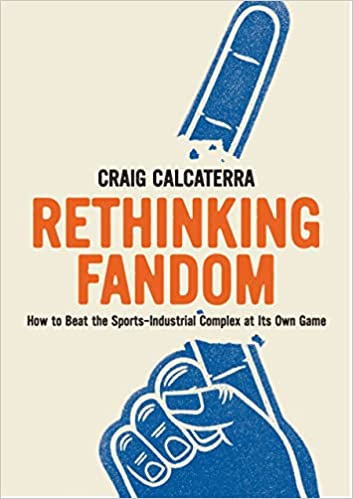Four Questions with Anne Trubek, Founder of Belt Publishing
She explains what it’s like to own and run a publishing house
Anne Trubek is the founder and CEO of Belt Publishing, an independent publishing house founded in 2013 to highlight voices and stories from the Rust Belt.
The house has now expanded to include non-fiction books on any topic and publishes a range of fascinating, quirky books. Some of my favorites include Rethinking Fandom by Craig Calcaterra and Bonnie Tawse’s The Belt Cookie Table Book.
In addition to running Belt, Anne has written The History and Uncertain Future of Handwriting and So You Want to Publish a Book?. She previously worked as a rhetoric and composition professor at Oberlin College in Ohio.
She was kind enough to chat with me about owning a publishing house, what makes a book “Belty” and more.
What was your path to opening Belt Publishing?
I was a rhetoric and composition professor. I started doing a lot of writing that wasn’t academic and I decided to do one book. It was a collection of essays about Cleveland. It was going to be a one-off, self-published project, but it took off more than anyone anticipated. So, we decided to start an online magazine that would continue the work of the first book and do similar essay collections for other cities. One project just kept rolling into other projects.
What’s the day-to-day of running a publishing house like?
I’m sure that my day-to-day is very unlike other publishers’ days. I move between a range of very different kinds of activities. I’m checking to see what orders have come in for our forthcoming titles, talking with our staff about the books we’re producing — whether they’re in editing, design or ready for printing. I’m dealing with the lease on our office space. And, I’m looking at queries for possible new titles, thinking about people I might want to reach out to see if they’re interested in writing for Belt.
It ranges from the smallest task — like running to the post office to ship a book — to the largest task — ordering thousands of books from the printer or renegotiating a contract with a distributor.
The easiest way to think about it is that I’m running a small business and doing everything that takes. There are definitely times when I think ‘this has nothing to do with writing or editing’ but there are also days about conceptualizing a new book or thinking through how a manuscript might become a better book.
What kind of books does Belt publish?
There are three kinds of books that we love.
One, we do hyper-local books, where the primary audience are people who live in a particular city. That’s kind of our bread and butter. It’s how we started. We have a book coming out this fall called The Cincinnati Neighborhood Guidebook, which is a series of essays about Cincinnati. Next spring, we’re going to a book called Buffalo in Fifty Maps.
Then we have our more national titles. They can “Belty” in two ways. One way is to be rooted in a city, like our new novel, Boys Come First, by Aaron Foley. It’s a romance and friendship story, but it takes place in Detroit and the city is very much a character. The second way is to have a kind of progressive slant, like Craig Calcaterra’s Rethinking Fandom, which is about sports. Those books have a certain kind of approach to cultural criticism or cultural history.
You write a fantastic newsletter, Notes from a Small Press, explaining the publishing industry to people who either are in it or adjacent to it. What do you wish that readers better understood about the world you work in?
I think a lot of readers who want to be writers often set up publishers as antagonists — and I really wish they didn't. We’re not up against you when we don’t give you huge royalties. We’re just trying to make the numbers work.
I’d also like people to understand that publishing is basically taking a risk. You’re taking a big financial risk on something and hoping that in a year, two years, three years, you get your money back and hopefully some more.
I also think that understanding different types of publishers would be great. It’s a tough kind of education, but most readers don’t notice who publishes their book. I’d love for people to know the difference between an independent press and the corporate press could be better understood by readers, but that’s a tough thing for anyone to do.
So, what is the difference between and independent and corporate press?
In the United States, there have been a series of acquisitions and mergers over the last 34 years. There are now the Big Five publishing houses, which will soon be the Big Four. They’re all multinational corporations. So, an independent press is one that’s not owned by a corporation.
I like to use beer as an analogy. Budweiser and Coors are one kind of beer company and then there’s the craft brew that you have at your local bar.
Thanks again to Anne for speaking with me. You can follow her on Twitter, subscribe to her newsletter and order books from Belt.
I’ll be back in your inboxes Tuesday with more book recommendations. Have a great weekend and Happy 4th of July!
What to Read If is a free weekly book recommendation newsletter. Need a rec? Want to gush about a book? Reply to this email, leave a comment or find me on Twitter @elizabethheld.
If you’re reading this on Substack or were forwarded this email, and you’d like to subscribe, click the button below.
Disclosure: I am an affiliate of Bookshop.org and I will earn a commission if you click through and make a purchase.







Nice interview. Loved the huge advances part.
I’m considering adding a publishing arm to my business as an author. This was helpful and interesting!